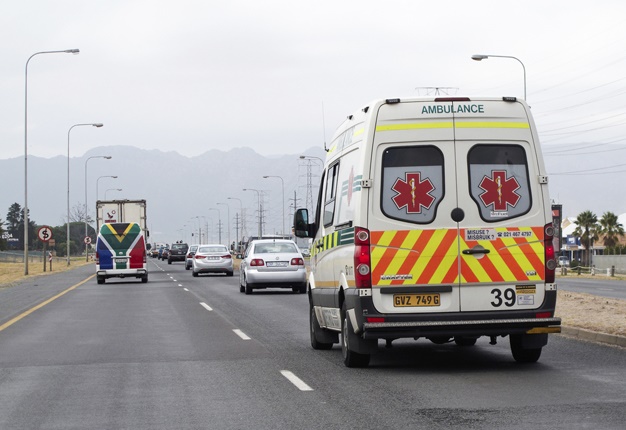
Transport Minister Blade Nzimande released the Easter road death toll figures, announcing a shocking 14% increase in road fatalities from March 29 to April 9 2018, compared to the same period in 2017.
The Minister reports that 510 people were killed during the Easter holiday period. We've included comment from Nzimande at the end of this article.
Four crashes claimed 35 lives
Nzimande said: "There were significant events that impacted on our plans and are worth considering when releasing this report. Key among them is that there were four major crashes that took place in rural areas.
"Two of them happened in KwaZulu Natal – Greytown and Taylor’s Halt – and the other two in Limpopo – Diperere village and near Mabula Lodge in the Waterfall district.
"Together these four crashes claimed thirty five lives and left twenty six injured. These crashes happen where they were least expected and on roads that do not normally experience a high number of fatal crashes."
15 0103 vehicles stopped
Nzimande said: "Ladies and gentlemen, during this Easter period, we have stopped 150 103 vehicles and issued 109 771 notices which is higher 60 025 issued in 2017.
"What stands out in analysing the preliminary report is that road crashes affect the poor and working class disproportionately more than other groups."
Pedestrians affected
Nzimande said: "This Easter there was a noticeable shift towards the rural poor who use the roads as pedestrians.
"The number of pedestrians affected by fatalities increased from 33.8% in 2017 to 37.3% this year."
An increase was also recorded in the number of drivers killed from 20.5% in 2017 to 25.6%. Passengers were the only user group that experienced a significant decline from 43% in 2017 to 35.5% this year.
Of concern is the increase in the number of young children and middle-aged pedestrians killed on our roads. Child (up to four-years-old) deaths increased by 4.9%; 2.6% in 2017 to 7.5% in 2018. Individuals aged from 50 to 54 also recorded a sharp increase from 1.3% in 2017 to 8.4% in 2018.
Top 14 things you should know: List by the Transport Department
1. The main contributory factors to road fatalities are related human behaviour; with male drivers accounting for 71.1% of fatalities and females for 24.1%.
2. In 2018, "human factors" contributed 89.5% to the crashes as compared to the 74.3% in 2017.
3. The number of "jay-walking" pedestrians killed on our roads also increased to 38.0% as compared to 25.2% in 2017.
4. The report shows an increase in "undetermined factors" which contributed 25.7% to the overall fatal crashes.
5. Hit and run decreased by 16.1% in 2018 as compared to the 22.8% in 2017.
6. Roads and environmental factors contributed 6.2% as compared to the 19.9% recorded in 2017.
7. 6435 drivers who were caught speeding, 3208 drivers driving unlicensed vehicles, 300 drivers without drivers licenses, 2344 drivers without fastening seat belts and 1698 drivers driving vehicles with worn tyres.
8. Amongst others, the highest speedsters were arrested for driving at 224km/h at the N3 Hilton in KwaZulu Natal, followed by Free State at the N3 Warden with 208km/h, followed by Gauteng at the N12 Tom Jones in Benoni at 206km/h.
9. 900 vehicles were impounded in Mpumalanga followed by the Eastern Cape coming in at 118.
10. There were 430 fatal crashes reported over the extended Easter period compared to 349 during the previous year.
11. Light motor vehicles accounted for about 44.6% of the crashes almost the same as last year. Bakkies or light delivery vehicles accounted for the second highest number of vehicle collisions at 21.2%, minibuses recorded were third recorded a 1% decrease to 9% and busses were stable at 1.7%.
12. Most crashes occured on Friday, Saturday, Sunday between 5pm and 8pm.
13. Critical routes with high accident rates were identified at the planning phase and we intensified our traffic law enforcement operations in these areas.
14. The majority of crashes occured on "unnamed village roads in Limpopo as well as on the N2, N4 and R518". The most affected rural district municipalities in Limpopo are Vhembe, Waterberg, Mopani and Greater Sekhukhune.

Minsister responds:
Nzimande said:"Ladies and gentlemen, to redress the challenges experienced during this Easter period, the RTMC together will all provinces will develop a road safety plan focusing on the main contributory factors of crashes such as pedestrians, impaired driving, dangerous driving and occupant safety."
"We will align all provincial road safety plans with the national road safety strategy and focuses our attention on the 50 national identified hazardous locations. We will do this by also heightening the driver safety educational programmes within vulnerable communities.
"We are indeed disappointed by not meeting the 10% reduction in fatalities that we had set for ourselves. However, we will not lose hope.
"We will relentlessly continue our efforts to save lives because Nelson Mandela taught us that: 'The glory in living lies not in never failing, but in rising every time we fall'.
"As I conclude, let me commend the MECs, Mayors, SALGA, traffic law enforcement officers, members of the South African Police, emergency medical service, doctors and nurses who maintained high levels of visibility on the roads throughout the Easter period.
"A word of gratitude also goes out to all the fraternal organisations that assisted in making this huge success possible. This includes the youth, faith-based organisations and organisations of people living with disabilities, who undertook various campaigns to raise awareness about road safety across the country. We are grateful to religious leaders who used their pulpits to Preach and Pray for road safety.
"Let me also thank the media for their role in promoting and publicising our road safety initiatives, and ensuring that everyone in the country is aware of their responsibility. We look forward to a continued and improved relationship even further.
"I also wish to commend the RTMC’s National Anti-corruption Unit for their continuous efforts in dealing with bribery, fraud and corruption. However, I want to see more results from this unit in dealing with the corruption and fraud committed at Driver Learner Testing Centres (DLTCs) and driving schools. For us to restore public confidence in our system, we must also clean up these DLTCs and ensure they operate in an efficient and effective manner."




 Publications
Publications
 Partners
Partners











